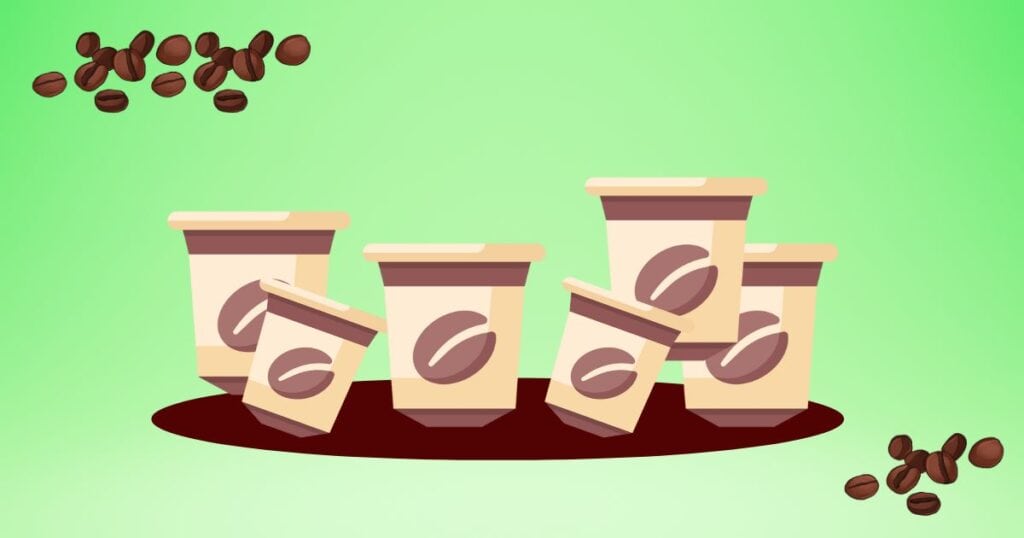Do you know how to remove cafestol from coffee? It’s no surprise coffee is probably the most popular brew around the world, its distinctive aroma, wonderful taste and of course its health benefits including the antioxidants and help your body. On the flipside, one of the health issues coffee occasionally causes is cafestol. But what does this mean and how to remove cafestol from coffee to turn into a healthier beverage. Let’s go over all the questions about the topic and…
Key takeaways:
- What is cafestol and what’s not
- Why cafestol isn’t good for your health
- 3 effective ways to remove cafestol from coffee
What’s the best way to remove cafestol from coffee?
First off, let’s go over the meaning of cafestol: it’s natural diterpene in coffee beans, and coffee is brewed. They come out as a layer of esters in unfiltered coffee which in the long term can increase cholesterol. Cafestol and kahweol make up about 20% of coffee lipids.
The good news is that there are three easy yet effective ways to get rid of it from coffee:
- Use coffee filters when brewing cause most of the cafestol stays on the filter.
- Filtering your coffee through a coffee sock will block cafestol ending up in your brew.
- Switching to coffee pods can also help you reduce cafestol in your coffee to the minimum.
What you should know about cholesterol?
Cholesterol is a kind of fat in our blood produced in the liver that our body needs to keep going, but, as with many other things, having too much of foods that increase our cholesterol level can cause health issues, including heart disease.
Some of the high cholesterol foods are:
- beef and pork meat
- cheese
- chips
- eggs
- Shellfish
- processed meat
It goes without saying that balancing our diet is key to our health.
Here’s what coffee expert says about removing cafestol from coffee:
Unfiltered coffee is associated with higher morbidity than filtered coffee. They also say that filtered coffee is associated with lower morbidity than no coffee. But you have to read further to discover that unfiltered is better or at least no worse than no coffee.
– jpender
Which coffee type is the highest in cafestol?
The cafestol content in your cup mainly depends on two factors:
- Brewing Method:
Looking through the lens of brewing, some methods are healthier than others.
For example, because there’s no coffee filters or socks involved, inevitably coffee made with French Press is high in cafestol since its filter only prevents coffee sediments from going through your brew, but it doesn’t really filter out coffee oils.
And for this reason there’s been much of a debate whether it’s good to make coffee with a French Press or not.
Likewise, Lebanese coffee and espresso made with Moka also have higher cafestol content than other brewing methods simply because the coffee isn’t filtered.
- Coffee Beans Roast:
The coffee roast also makes a whole difference to the amount of cafestol in your cup; the lighter the roast (blonde coffee) the more cafestol they contain, so it’s a safe bet to opt for a dark roast to reduce the cafestol intake. Grinding is equally key to reducing your cafestol intake as coarse grinding contains less lipids and cafestol than finer.
Here’s a table that summarises the information above:
3 different types of coffee filters
Here are the three most popular kinds of coffee that will do the job for you.
1. Paper coffee filters
Paper coffee filters are – in my humble opinion – hands down the best option to filter your coffee and reduce the cafestol; they come in two different colours: brown made from paper without any chemicals and white bleached (yes they contain bleach), and as you might have guessed a brown filter is the healthier option. You can even add your brown used coffee filters to your compost if you’re into gardening, a great fertiliser for your lawn and flowers.
2. Cloth coffee filters
Cloth coffee filters are also great for filtering your coffee; they’re made from either linen or cotton and they’re easy to find online and relatively inexpensive. You can get some decent reusable ones for just $8. They’re also easy to wash and keep them as new, and when you see them. They’re a small tool and can easily be kept in a cupboard. You can also use them to filter loose tea if tea bags aren’t up your street.

3. Metal coffee filters
Metal coffee filters and more specifically coffee pods are not only great for filtering coffee oils but also dead easy to use. Made from either aluminium or stainless steel, coffee pods come in different flavours, making high-quality espressos or any espresso-based coffees (cappuccino americano or latte); all you need to do is pop them in the coffee machine and you’re good to go without messing about with grinding or messing up the kitchen with coffee. On the flipside, they aren’t as effective as paper and cloth coffee filters, preventing less cafestol from ending up in your cup. Plus, they cost more than the other two options.
Here’s a table that summarises the benefits of each method for removing cafestol discussed above:
| Method for getting rid of cafestol | Benefits |
| Paper coffee filters | Affordable,effective and easy to use |
| Cloth coffee filters | You can reuse them many times |
| Metal coffee filters | Easy to use |
Will a paper filter entirely stop cafestol going through your cup
Using a filter is a pretty good idea since it blocks up to 98.5% (about 12.4% stays on the paper, 85% on the sediments) and of the cafestol in your coffee maker, so just a little portion ends up in your cup. So it’s pretty effective.
In similar vein, another study carried out on the topic with the researchers using a coffee sock to measure its effectiveness and it’s not an overstatement to say that those socks made of fine fabric get the job done, it is removed

What’s the cafestol content in coffee pods?
Coffee is not only handy to use and doesn’t create a mess with spent coffee, but they are great filters for cafestol and kahweol. Simply put, they work as coffee papers or shocks. A study contacted on the topic found out that a single espresso (about 50ml) made from pods has only between 10.7%-14% cafestol content compared to a single espresso without any sort of filter used.
Is French Press too bad for your health?
A French Press is a small gadget you can store in a cupboard, inexpensive to buy, needs zero to minimum maintenance and dead easy to use: add water coffee, give it a few minutes for the coffee to bloom, push the plunger down and you’re good to go, you have a pretty awesome coffee rich in flavour.
That’s the good news.
The bad news?
Because coffee made with a French Press is so rich the amount of cafestol and kahweol is higher than other coffee types, so having five to six cups of French Press coffee may have a negative effect on your cholesterol and it might affect your health in the long run.
How to add a filter to a French Press to reduce cafestol content
If you’re partial to French Press coffee then it’s wise to go for coarse grinds that have less cafestol in them or consider cutting down daily coffee intake, so it doesn’t affect your cholesterol much. But I absolutely understand… Who wants to cut out coffee, this awesome drink with its unique aroma that really gets you going in the morning?
But if these look obvious methods to reduce your cafestol intake. So to get to the root of the problem we need to use a coffee filter or sock to reduce the cafestol content of your coffee.
Here are two effective methods:
- You can simply hold a filter or a sock on the top, attach it to the brim of your cup and pour your coffee over it. This way the filter or sock will keep almost all the oils and you’ll enjoy a healthier cup of joe.
- The other way to go about filtering your coffee is to use Hario syphon paper filters that perfectly fit into a French Press. You can even crop the filter and adjust it in case it’s big for your French Press.
Does a Keurig filter out cafestol?
Yep, because Keurig has K-Cups fit into the coffee machine, most of the cafestol amount is taken out, allowing you to brew coffee that won’t cause you cholesterol issues whatsoever. It may cost you a bit more to often buy K-Cups for your Keurig but it’s so much better to spend money on filters than health check ups. (Did you know that Keurig machines have special features like high altitude settings?)
Let’s wrap it up
I get it, the idea of cutting out coffee, for whatever reason, can freak you out (yes, it freaks me out too), but DON’T PANIC. As long as you can filter your coffee, you’ll be alright. You can cut down all the frying food including stakes to reduce your cholesterol. Coffee is definitely not the one to blame… Have you tried iced americano at Starbucks?

- How to Remove Coffee Stains From Countertop The Easy Way - December 21, 2023
- Can You Reuse Coffee Grounds in French Press? Truth Inside - December 12, 2023
- Can Expired Coffee Creamer Make You Sick? 3 Ways to Find Out - December 9, 2023
